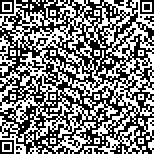| 摘要: |
| 人本主义视角下,量化商业街道空
间使用者的视觉体验进而理解空间要素如何
影响视觉行为与主观感知,对文化遗产地的
可持续发展具有重要作用。本文结合眼动实
验和语义差异法问卷调研测度街道空间主体
的客观视觉行为与主观心理感受,并采用
ANOVA单因素方差分析解析不同商业街道
空间对视觉吸引力及其感知的影响。研究发
现:第一,街道空间的视觉吸引力与主观感
知情况存在一定联系但不完全趋同;第二,
绿化景观的视觉吸引力较弱,但能够降低街道的负面感知;第三,商业门店、招牌广告具有较高的吸引力,但易产生失调、粗糙、狭
窄等负面感知;第四,龙头路的历史风貌建筑并未产生较强的视觉吸引力;第五,部分非
历史风貌建筑产生了较强的视觉吸引力,但可能增强现代感而削弱历史文化氛围;第六,
铺地作为商业街道底界面,是易被忽视的街道空间要素。总体上,本文从主体行为的角度
分析了客体环境的视觉品质,结合主客观感知为街道空间设计提供数据支持。 |
| 关键词: 商业街道空间 视觉吸引力 眼动实验 语义差异法 鼓浪屿 |
| DOI:10.13791/j.cnki.hsfwest.20220216 |
| 分类号: |
| 基金项目:国家自然科学基金资助项目(42171219、41671141);
福建省自然科学基金资助项目(2020J01011) |
|
| Research on Visual Attraction and Influencing Factors of Perception of Commercial StreetSpace in Cultural Heritage Site: Taking Gulangyu Longtou Road as an Example |
|
LI Yuan,HUANG Jingxiong,LIANG Jiaqi,ZHANG Yu,CHEN Yao
|
| Abstract: |
| Under the influence of people-oriented concept, space quality and design on a
micro-scale are important topics in public health, sociology, and macroeconomic policy.
With the change in the concept of heritage protection, tourism has played an important
role in the sustainable development of cultural heritage sites (CHS). Commercial streets in
CHS have dual functions of cultural inheritance and commercial development. Therefore,
quantifying pedestrians’ visual experience in commercial street spaces, and understanding
how spatial factors affect visual behavior and subjective perception play an important
role in the sustainable development of CHS. This paper took Longtou Road, which is on
the UNESCO World Heritage Site Gulangyu, as a study case, and extracted 12 photos
composed of different visual elements from the street space as samples. Then, measured
visual attraction of different street spaces based on eye-tracking experiment, and extracted
subjective perception of pedestrians by Semantic Differential (SD) questionnaire. Finally,
it used one-factor ANOVA to analyze the difference in visual attraction and subjective
perception of different street spaces.
The results show that: (1) There is a certain correlation between visual attraction and
perception evaluation in Gulangyu heritage street space, but it is not fully convergent. The
natural environment is an unignorable part of street space, for commercial streets should pay
attention to the store design guidelines to ensure the rationality of planning. (2) The greening
factors in the environment can improve pedestrians’ experience, although they cannot attract
pedestrians directly. (3) The commercial factors in the environment, for example, commercialstores, signboards, or advertisements, have a strong attraction for pedestrians. However, the lack of reasonable planning is likely to produce negative
perceptions such as space imbalance, roughness, stenosis, and et al. (4) The historic buildings on Longtou Road have not shown strong visual
attraction. (5) The commercial streets in CHS have both cultural and commercial characteristics. The improving visual attraction of non-historical
buildings is accompanied by the cost of weakening the historical and cultural atmosphere, which poses challenges to the historical and cultural
inheritance in CHS. (6) In addition, the bottom interface of the current street space is an easily overlooked element. Therefore, how to use the
pavement to reflect the historical and cultural elements of street space remains a topic of concern.
The sustainable development of CHSs should pay attention to the historical culture and users’ psychological feelings. Based on the above
analysis result, it put forward suggestions to improve the spatial quality of Longtou Road as follows: (1) Combined with visual habits to improve the
visual quality of street elevation and contour of CHS. The existing forms and orderliness of commercial advertisement should be standardized and
strengthened moderately, to coordinate the visual, historical, and cultural characteristics. (2) Enhance the historical and cultural communication
value of historical buildings on Longtou Road. Especially, the space and landscape planning should focus on the field vision of historical buildings,
which can further become a media for spreading historical and cultural values. (3) Although the visual attraction of landscape is weak. However, as
the visual element, it can well coordinate the overall landscape of street space. Therefore, the space and landscape planning should pay attention to
the rational use of landscape, to help the users to have a more positive psychological perception of commercial street space in CHS. (4) Pavement has
received low attention. However, it plays an important role in improving the quality of street space. Considering the situation of Longtou Road, local
material can be used to form textures that reflect the cultural characteristics of Gulangyu. The change of pattern can provide clear spatial guidance
and a better visual experience for pedestrians as well.
Generally, this paper analyzes the visual quality of the object environment from the subject behavior perspective and provides data support for
street space design combined with subjective and objective perception. The purpose is to transform visual attention under the influence of subjective
consciousness into an objective street space evaluation method and to verify through the psychological feeling questionnaire. Theoretically, this paper
aims to understand pedestrians’ attention to street visual elements from the perception of space and behavior interaction and reveal the coupling
relationship between attention and visual perception. The result shows this paper is a useful exploration to integrate the coupling of pedestrians’
subjective feeling preferences and objective street environment attraction factors. The relationship between them proves this methodology combining
objective physiology and subjective perception is feasible. Practically, this paper reveals the relationship between the attraction of street space
elements and pedestrians’ evaluation, and provides guidance and reference for street space design method and scheme exploration. |
| Key words: Commercial Street Space Visual Attraction Eye-Rracking Experiment Semantic Differential Method Gulangyu |


